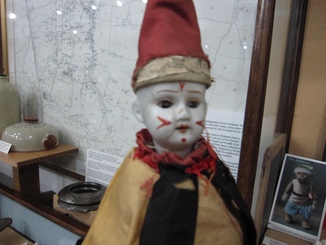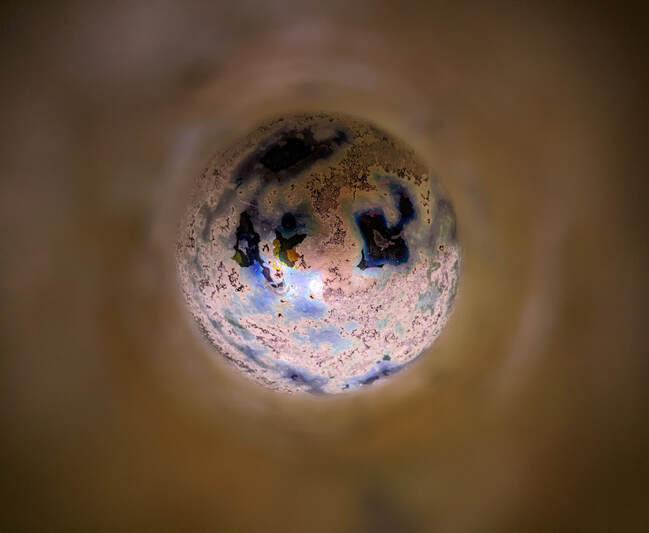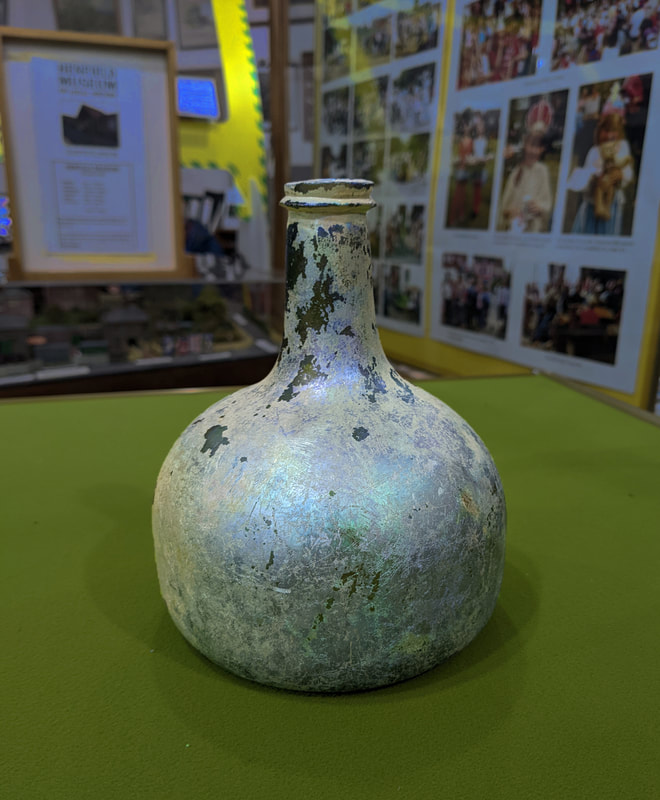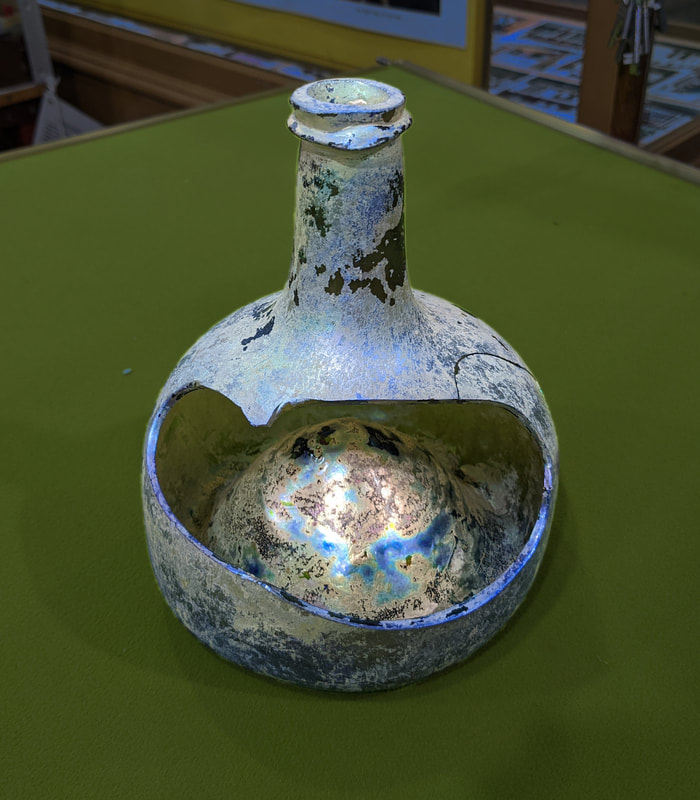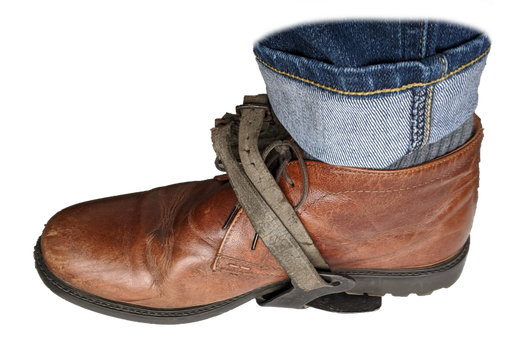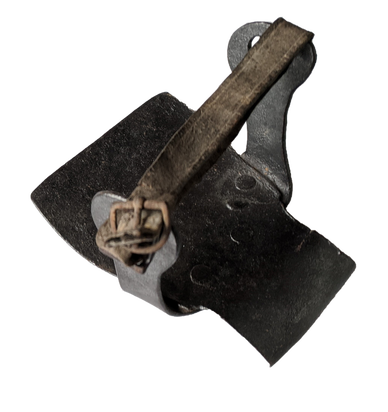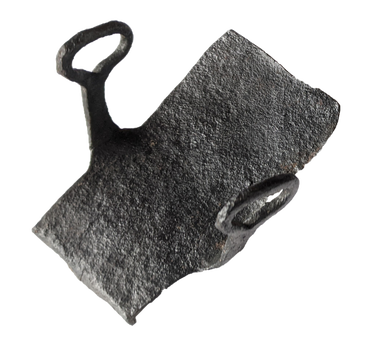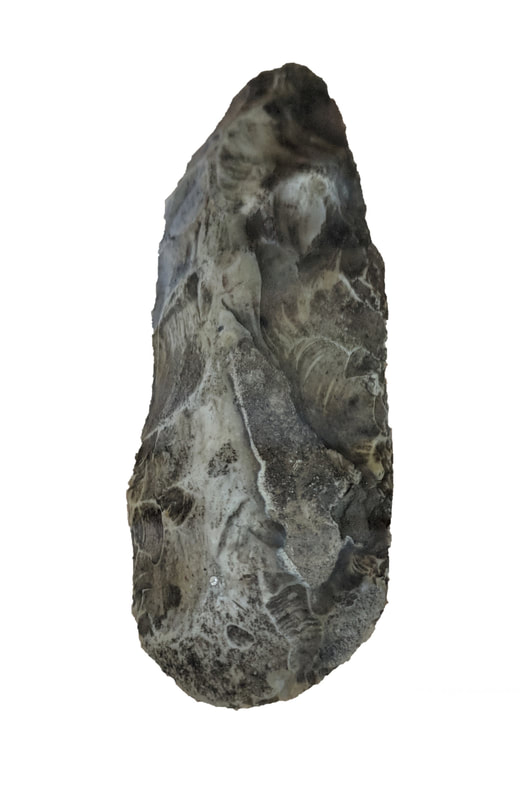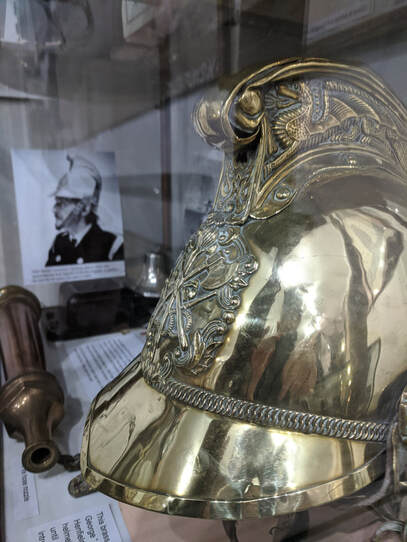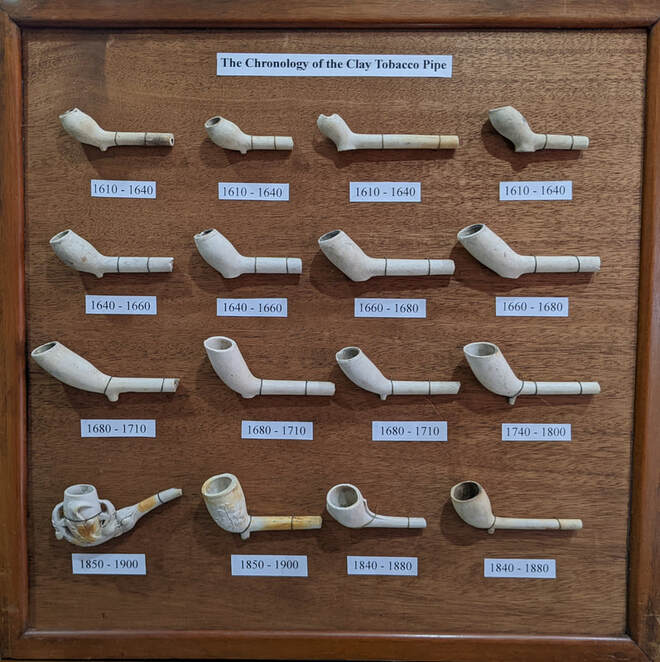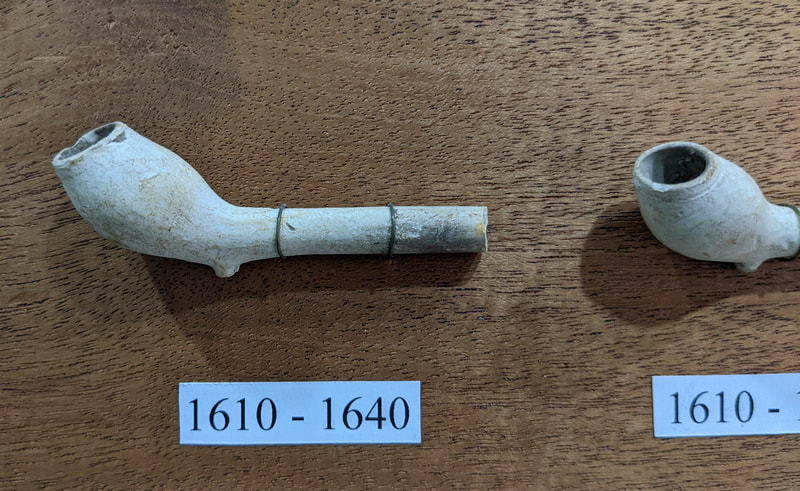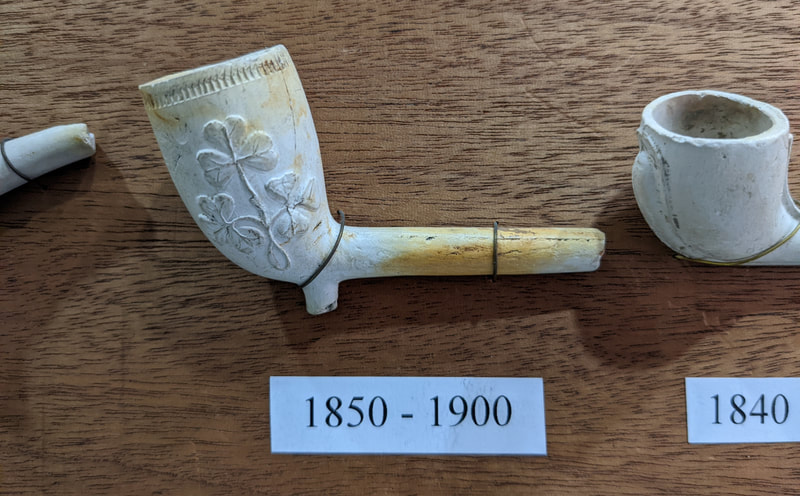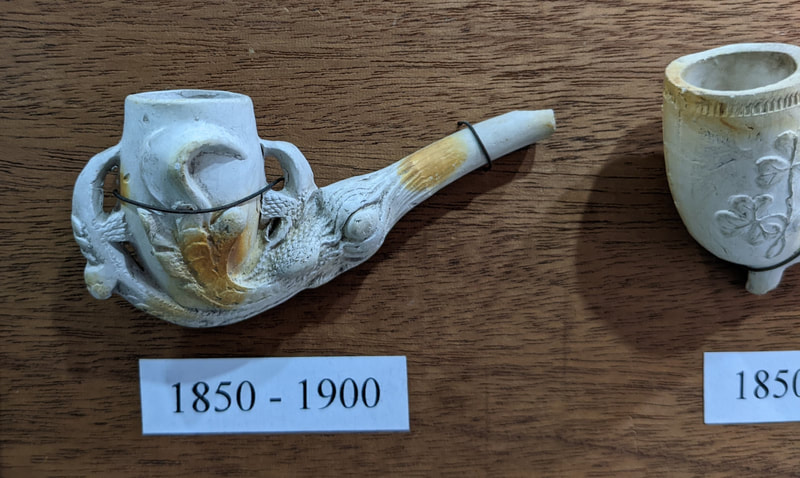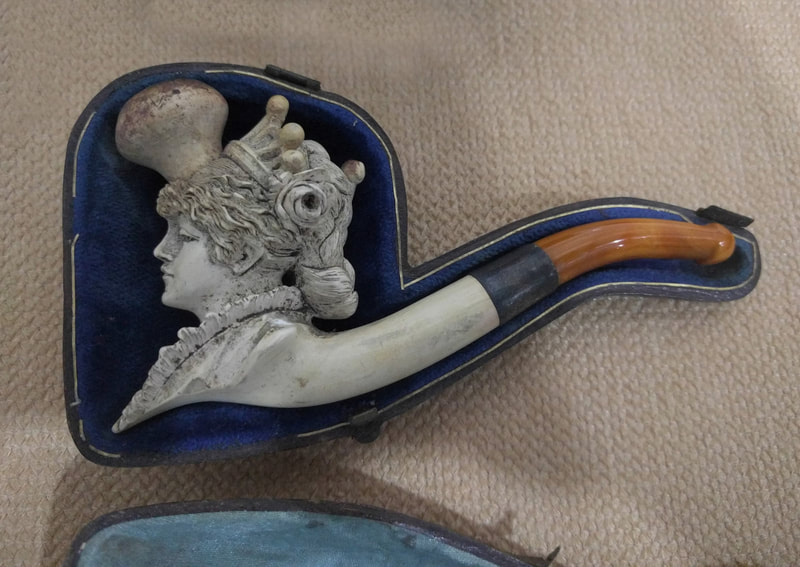A Henfield Museum Community Description Project
|
There are many objects in our museum. Choosing one to look at more closely can be rewarding.
You could write down some of your thoughts and maybe take a photo or make a drawing of the object. Please email your text, photo or scanned drawing to: [email protected]. We will collate and upload here as well as on the Henfield Museum Facebook page. Physical project slips are here and can also be returned to the Museum or Parish Office. To the right is an example of what we suggest, but it’s entirely your choice to write just what you want to, because it’s your contribution that brings a museum object to life in a special way both for yourself and for many others. Thanks. A project created by Museum Friend Christophe Fernandez. |
A Favourite Object: Child's Doll
|
Selected Entries
Glass Wine Bottle
Anonymous, 9th May 2019
'Wine bottle 1700 (in hexagonal case)
String ring round the top that held cork
Pontil marking on the bottom underside
Where glass maker held bottle with rod
“Opalescent” (acid in ground reacting to glass)'
String ring round the top that held cork
Pontil marking on the bottom underside
Where glass maker held bottle with rod
“Opalescent” (acid in ground reacting to glass)'
Here we see a stubby Stuart (or early Georgian) wine bottle. The gloriously iridescent state was caused by the glass reacting with acid in the soil over the centuries. The bottle was found during excavations behind Hamfelds in Henfield High Street and has been in the collection since 1987. The photos do not show a before and after - one side was damaged during discovery! Perhaps it served a joyous dinner party, or perhaps provided fuel for some solitary musings one night three centuries or more ago...
The 'string ring' around the top would have held the cork on, while the convex bottom with 'pontil' mark indicates where the bottle was attached to a rod during the glass blowing process.
The 'string ring' around the top would have held the cork on, while the convex bottom with 'pontil' mark indicates where the bottle was attached to a rod during the glass blowing process.
Iron boot protector
Leo Jago, August 2021
|
'Object'
In our village museum My favourite object An iron boot protector To protect the instep of your digging foot As it bears down on the spade. Reminds me of my Uncle Jim He dug holes and trenches in our city He called a spade a “bloody shovel” It was heart shaped As a gunner he probably used one Across North Africa And up through Italy. Didn’t talk about the war Or the beauties of Rome Said he went to the movies He was that sort of joker. The boot protector, In the middle of the night waking time Reminded me of other diggers and ploughmen Medieval furlongers And nowadays ploughing competitions Focussed on the horses’ straightness. Nowadays! Real tractors, rear wheels Big as a tall man SatNav their economic way round a field. Do they have competitions with Tricky irregular fields to see which save the most time and money? Did the people of the voyage compete For straight rows with their digging stick? Settlers never asked that sort of question. Likewise, there is no word from she who cooked the grain or kumara Whether they tasted any better for a straight furrow. 10.08.2021 |
Neolithic Flint Axehead
Robert Gordon, July 2020
|
c. 2500BC, found at Furner's Farm sandpit
I like this object partly because it's an easy one to overlook - especially in a crowded case in a crowded museum. At first glance, many prehistoric objects can seem nondescript and simple. But a closer look shows an object crafted, often with immense skill, over long or frequent sessions of intense activity, a regular ritual common to the stone age world. It has been said that more refined and delicate examples were more likely prestige objects - in this case, the rougher head appears to be knapped for definite practical use. In many ways, this unshowy, deceptively insignificant object exemplifies entire cultures over unimaginable periods of human history. Visualising the prehistoric landscape when the craftsman of ages past sat to his task is difficult, let alone trying to inhabit the mindset and preoccupations of the life of the maker. A wild land, newly - in the grand scheme of things - emerged from an ice age. Scattered agricultural communities in place and the beginnings of forest clearance - but for the most part, still an arboreal wilderness stretching from the south coast to the sparsely inhabited lands of the north. All this before we consider the crucial purpose of the axehead (or dagger) - life and death. Perhaps in warfare, but more likely as a ticket to meat, and protein. While the famous woolly mammoth was recently extinct, the last survivors withdrawn to live out their twilight years on a couple of chilly island redoubts, wild boar, aurochs, wolves, buffalo and giant birds of the air would have roamed their wild land, with sabre tooth tigers and other megafauna conceivably remaining in fireside tales, handed down over generations as constellations recognised by lost ancient names shone down from above. The flint axehead is a symbol not only of an emblematic craft of eons of human time, but of the immensity of the technological progression seen since - a progression heralded to the descendants of the maker of this tool by the coming of those familiar with the new world - that of metal and the smelters of bronze. |
View a 3D recreation of a Neolithic Laurel Leaf spearhead of similar age
This fine 'laurel leaf' spearhead, more delicate than the axe above, was found on Henfield's southern ridgeline in the early 1990s. Imagine it attached to a wooden haft as the bearer looked over the untamed land towards the hill later to be known as Chanctonbury Ring.
This fine 'laurel leaf' spearhead, more delicate than the axe above, was found on Henfield's southern ridgeline in the early 1990s. Imagine it attached to a wooden haft as the bearer looked over the untamed land towards the hill later to be known as Chanctonbury Ring.
Brass Fireman's Helmet
Anonymous, 9th January 2024
|
It caught my eye because it was shiny. I thought it was made of gold and wondered how much it was worth and how heavy it was. I would like to try it on!
You can buy one on EBay for around £100. |
Collection of Clay Pipes
Anonymous, May 2019
I love the shape and design of old clay pipes.
To be featured...
Grab a sneak preview below - and then send in your entry!
Website funded by the Friends of Henfield Museum, built & maintained by R. S. Gordon. Credit to Mike Ainscough for moving the website idea from discussion to reality.
© Henfield Museum. All rights reserved except where stated otherwise.
